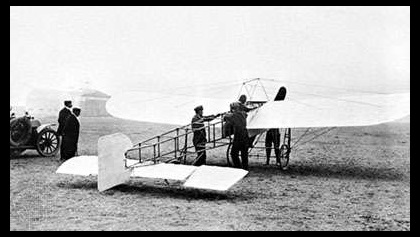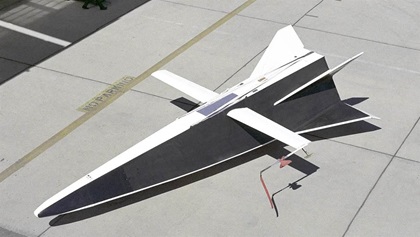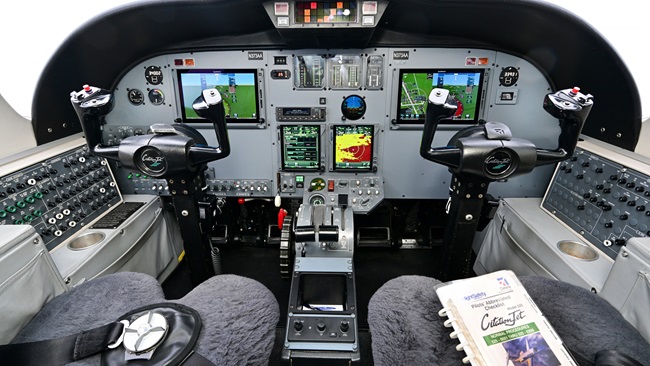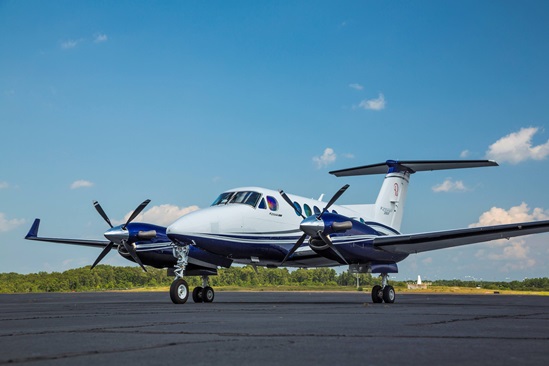Aviation history: They said it couldn’t be done
50 aircraft designs that make you go ‘huh?’—including many that actually fly

Leonardo da Vinci designed a hang glider as early as 1488; the Montgolfier brothers launched balloons with animals as test pilots (sheep, duck, rooster) in 1782, and balloons were used in the American Civil War and the Boer War; Ferdinand von Zeppelin created the blimp/zeppelin airships; and Otto Lilienthal was the “Glider King.” Of course, it is the Wright brothers who get all the credit for the first manned powered flight but many designers over the years have believed their idea would fly (excuse the pun, please) and some of those ideas today seem downright ridiculous. But who’s to say the ideas of today won’t be the aircraft of the future? In no particular order, consider these aircraft designs:
- Langley Aerodrome: First heavier-than-air powered aircraft deemed “capable” of manned flight (1903).
-
 Blériot XI: Monoplane crossed the English Channel (1909).
Blériot XI: Monoplane crossed the English Channel (1909). - Wright Flyer: Canard biplane (1903).
- Fabre Hydravion: First to take off from water (1910).
- Paul Cornu’s helicopter: First to use rotor blades instead of wings (1907).
- Taylor Aerocar: Roadable aircraft (1949).
- Dornier Do 31: VTOL jet transport aircraft (1967).
- McDonnell XF–85 Goblin: Tiny parasite fighter dropped from bomber aircraft (1948).
- Douglas X-3 Stiletto: Designed for Mach 2, achieved 650 mph in level flight (1952).
- Bartini Beriev VVA–14: Vertical takeoff amphibious aircraft built to fly in ground effect (1972).
- KM “Caspian Sea Monster” ground effect vehicle. Largest, heaviest aircraft of its time (1966).
- Stipa-Caproni: Barrel-shaped “intubed-propeller” design (1932).
- Northrop XB–35: Flying wing bomber design (1946).
-
Sikorsky X2: 250-knot helicopter with coaxial rotors (2008).
- Snecma Coléoptère: “The beetle” needed no runway (1959).
- HZ–1 Aerocycle: One-man “personal” helicopter (1954).
- Hafner Rotabuggy: A Willys Jeep that flies (1943).
- Goodyear Inflatoplane: Rubber airplane (1956).
- Vought V–173 “Flying Pancake”: All-wing design, looks like a flying saucer (1942).
- Caproni Ca.60: Nine-wing flying boat (1921).
- Hiller X–18: Tiltwing and vertical/short takeoff and landing transport (1959).
-
 Curtiss-Wright VZ–7: Quadrotor “flying truck” (1957).
Curtiss-Wright VZ–7: Quadrotor “flying truck” (1957). - Mil V–12: Largest helicopter ever built (1968).
- H–4 Hercules “Spruce Goose”: Flying boat made of birch wood (1947).
- Vultee XP–54 Swoose Goose: Fighter with a big nose (1943).
- Miles M.39B Libellula: Tandem-wing aircraft for landing on carriers (1943).
- Curtiss-Wright XP–55 Ascender: Canard fighter with a rear-mounted engine (1943).
- Blohm and Voss BV 141: Asymmetrical reconnaissance aircraft (1938).
- Grumman X–29: Forward-swept-wing, carbon-fiber jet aircraft (1984).
- McDonnell XP–67 Moonbat: High-speed, long-range, high-altitude piston interceptor (1944).
-
 NASA Hyper III: Remotely piloted lifting body aircraft (1969).
NASA Hyper III: Remotely piloted lifting body aircraft (1969). - NASA AD–1: Burt Rutan-designed subsonic jet with oblique wing (1979).
- Northrop XP-56 Black Bullet: A tailless design—yes, no horizontal tail (1943).
- Lockheed XFV Salmon: Vertical takeoff aircraft nicknamed the “pogo stick” (1954).
- Team Airbike: Kitbuilt ultralight aircraft (1994).
- Lockheed Martin P–791: Aerostatic hybrid airship (2006).
- Nemeth Parasol: A round wing on top of the fuselage (1934).
- Santos-Dumont 14-bis: Box kite-like biplane (1906).
- Boeing 377 Pregnant Guppy: Outsize-cargo freight aircraft (1962).
- Scaled Composites Proteus: Tandem-wing high-altitude, long-distance aircraft (1998).
- CAC Boomerang: Combat aircraft built in Australia (1942).
- White Knight Two: Quadjet cargo aircraft used to lift SpaceShipTwo (2008).
 Airbus A300-600ST Beluga: Super Transporter carries oversized cargo (1994).
Airbus A300-600ST Beluga: Super Transporter carries oversized cargo (1994).- Concorde: Supersonic passenger airliner (1969).
- Rutan Voyager: Front and rear propellers powered by separate engines (1984).
- Breitling Orbiter 3: First nonstop balloon flight around the world (1999).
- Christmas Bullet: Cantilever wing biplane with no struts or braces (1919).
- Blackburn “Roc”: Turret-armed fighter aircraft (1938).
- McDonnell Douglas X–36 Tailless Fighter: Look, ma, no tail (1997).
- Northrop Tacit Blue “The Whale”: Stealth technology demonstrator (1982).
What did we miss? Send your comments to [email protected].
Email [email protected]
The future
Dr. Richard Anderson of Embry Riddle’s Eagle Flight Research Center recently told assembled engineering students that they are ushering the era of urban air mobility. In his talk to incoming students, Anderson said there are more than 140 companies currently investing in hybrid-electric aircraft design. “It’s your turn,” he told the students. “You’re about to change the world. Airplanes are not going to look like they’ve looked for the past 115 years.”



